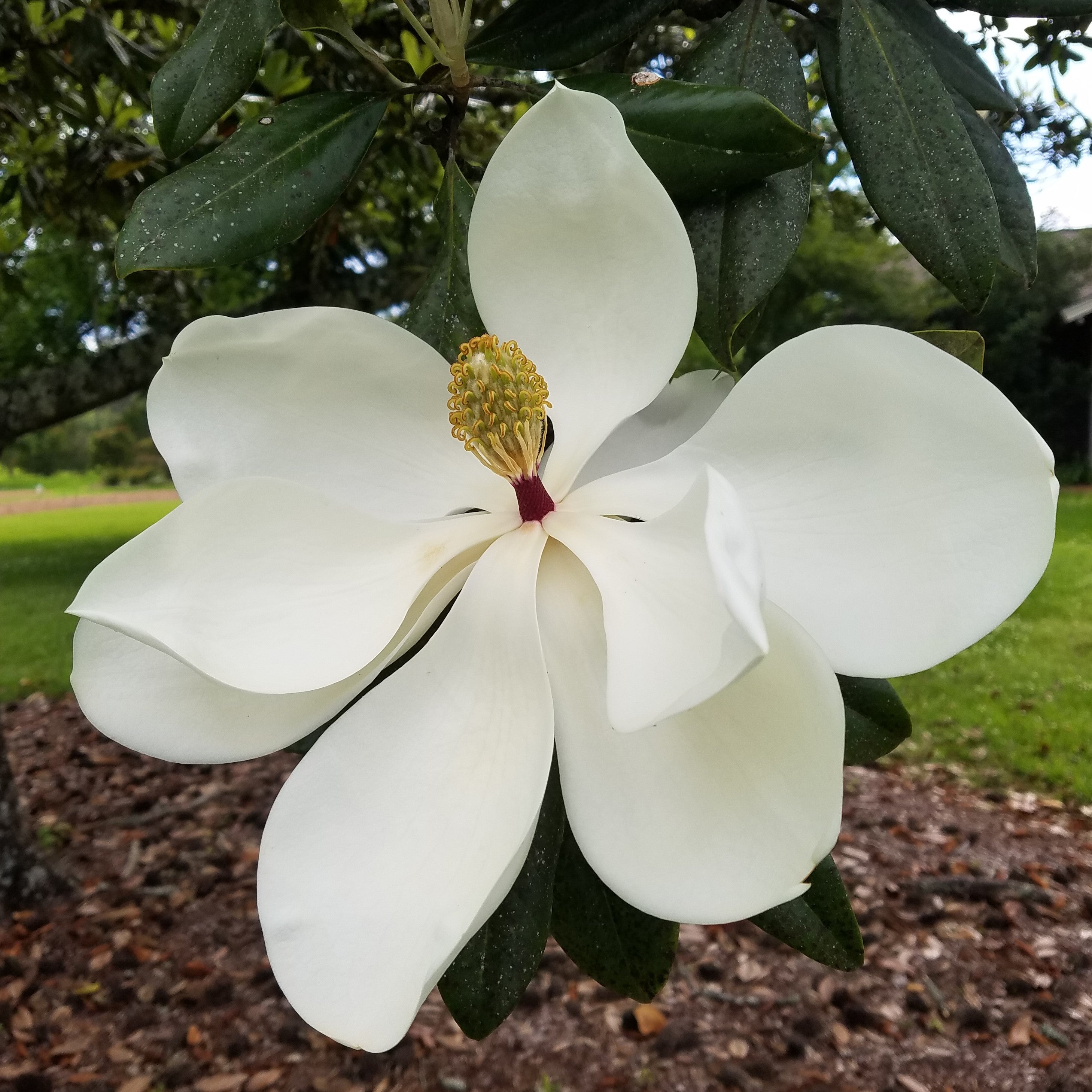A Few of My Favorite Native Plants
Published 2:09 pm Friday, April 28, 2023

- COURTESY PHOTO/Mary Helen Ferguson Southern magnolia flower.
|
Getting your Trinity Audio player ready...
|
I recently learned that Governor Edwards proclaimed April 2023 Native Plant Month and thought I’d write about a few of my favorites. I’m covering trees and fruit plants this week and will write about some others next time.
It’s important to understand that not all plants native to Louisiana are well-suited to every site. Areas of the state differ with respect to how cold it gets in the winter and much heat is experienced in the summer. Likewise, sun/shade conditions, drainage, soil type, and available space should be taken into account.
The southern magnolia (Magnolia virginiana) is an iconic southern tree with good reasons. Besides the large flowers that are one of Louisiana’s state symbols, the trees are evergreen and highly storm tolerant. People are sometimes bothered by the fallen leaves, seedpods, or surface roots that can pose challenges when mowing. My suggestion is, where possible, to let the tree grow limbs close to the ground and shade out grass and weeds, so that mowing under the tree is irrelevant. If the tree is older and lacks low limbs, you can maintain a 3-inch layer of mulch under the canopy so that mowing is unnecessary. The mulch shouldn’t be right against the trunk but can start a foot or so from it.
Since the southern magnolia can grow to 100 feet tall and 50 feet wide, it isn’t the tree for every location, but it’s a great tree where there is space for it.
Live oak (Quercus virginiana) likewise doesn’t fit into every landscape but is a lovely tree. It’s also very storm-tolerant and has at least some leaves year-round. (It sheds leaves and grows new ones in the late winter to early spring.) While many trees grow taller than wide, old live oaks are often wider than tall (up to 120 feet wide and 60 feet tall).
Many people know I have a special fondness for blueberries. Several blueberry relatives – including Elliott’s blueberry or huckleberry (Vaccinium elliottii); tree huckleberry, sparkleberry, or farkleberry (V. arboreum); Darrow’s blueberry (V. darrowii); and deerberry (V. stamineum) are native to Louisiana. The rabbiteye blueberry (Vaccinium virgatum or V. ashei) – cultivars of which include commonly grow varieties such as Brightwell, Premier, and Tifblue – is also native to the southeastern US, though I can’t say that I’ve ever seen it growing in the wild. Plant at least two rabbiteye blueberry varieties for cross-pollination. Provide good drainage.
The muscadine grape (Vitis rotundifolia) is native to Louisiana, as well. While vines growing in the wild often do not produce fruit (many likely have only male flowers), cultivars of this native species exist. Some varieties have thinner skin and are better suited for fresh consumption. If you grow muscadines, be sure to grow at least one self-fertile variety. If you have room for two, you can grow a female-flowered variety, but you still need a self-fertile variety for pollination. Be sure to give muscadine vines adequate support and space (20 feet per plant on a trellis).
Finally, I’ll mention common or American persimmon (Diospyros virginiana). While not everyone is fond of these – perhaps owing to a bad experience or two with eating unripe fruit – ripe fruit is quite tasty and can be used to make delicious persimmon puddings. One thing I appreciate about common persimmon is its tolerance of many soil conditions, including less-than-ideal drainage. (Most fruit plants need good drainage.)
Common persimmons typically have female and male flowers on separate trees, and at least one of each is needed for reliable fruit production, which occurs on the female-flowered trees. Common persimmon trees often produce root suckers, and if you find a tree that produces good fruit, you may be able to dig up a root sucker in the winter and transplant it. Common persimmon trees often grow to about 35 feet tall and 20 feet wide.
Let me know if you have questions.
Dr. Mary Helen Ferguson is an Extension Agent with the LSU AgCenter, with horticulture responsibilities in Washington and Tangipahoa Parishes. Contact Mary Helen at mhferguson@agcenter.lsu.edu or 985-277-1850 (Hammond) or 985-839-7855 (Franklinton).




